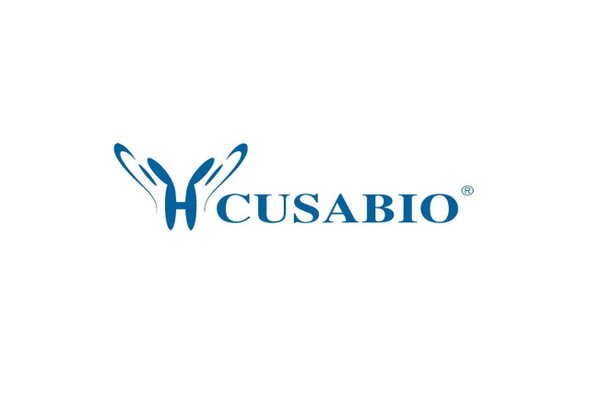Cusabio Human Recombinants
Recombinant Human Eukaryotic translation initiation factor 5 (EIF5) | CSB-EP007572HU
- SKU:
- CSB-EP007572HU
- Availability:
- 13 - 23 Working Days
Description
Recombinant Human Eukaryotic translation initiation factor 5 (EIF5) | CSB-EP007572HU | Cusabio
Alternative Name(s): 2810011H21Rik; D12Ertd549e; EIF 5; EIF 5A; eIF-5; Eif5; Eukaryotic initiation factor 5; Eukaryotic translation initiation factor 5; IF5_HUMAN; MGC36374; MGC36509
Gene Names: EIF5
Research Areas: Epigenetics and Nuclear Signaling
Organism: Homo sapiens (Human)
AA Sequence: MSVNVNRSVSDQFYRYKMPRLIAKVEGKGNGIKTVIVNMVDVAKALNRPPTYPTKYFGCELGAQTQFDVKNDRYIVNGSHEANKLQDMLDGFIKKFVLCPECENPETDLHVNPKKQTIGNSCKACGYRGMLDTHHKLCTFILKNPPENSDSGTGKKEKEKKNRKGKDKENGSVSSSETPPPPPPPNEINPPPHTMEEEEDDDWGEDTTEEAQRRRMDEISDHAKVLTLSDDLERTIEERVNILFDFVKKKKEEGVIDSSDKEIVAEAERLDVKAMGPLVLTEVLFNEKIREQIKKYRRHFLRFCHNNKKAQRYLLHGLECVVAMHQAQLISKIPHILKEMYDADLLEEEVIISWSEKASKKYVSKELAKEIRVKAEPFIKWLKEAEEESSGGEEEDEDENIEVVYSKAASVPKVETVKSDNKDDDIDIDAI
Source: E.coli
Tag Info: N-terminal 6xHis-SUMO-tagged
Expression Region: 1-431aa
Sequence Info: Full Length
MW: 65.2 kDa
Purity: Greater than 90% as determined by SDS-PAGE.
Relevance: Catalyzes the hydrolysis of GTP bound to the 40S ribosomal initiation complex (40S.mRNA.Met-tRNA[F].eIF-2.GTP) with the subsequent joining of a 60S ribosomal subunit resulting in the release of eIF-2 and the guanine nucleotide. The subsequent joining of a 60S ribosomal subunit results in the formation of a functional 80S initiation complex (80S.mRNA.Met-tRNA[F]).
Reference: The full-ORF clone resource of the German cDNA consortium.Bechtel S., Rosenfelder H., Duda A., Schmidt C.P., Ernst U., Wellenreuther R., Mehrle A., Schuster C., Bahr A., Bloecker H., Heubner D., Hoerlein A., Michel G., Wedler H., Koehrer K., Ottenwaelder B., Poustka A., Wiemann S., Schupp I.BMC Genomics 8:399-399(2007)
Storage: The shelf life is related to many factors, storage state, buffer ingredients, storage temperature and the stability of the protein itself. Generally, the shelf life of liquid form is 6 months at -20?/-80?. The shelf life of lyophilized form is 12 months at -20?/-80?.
Notes: Repeated freezing and thawing is not recommended. Store working aliquots at 4? for up to one week.
Function: Catalyzes the hydrolysis of GTP bound to the 40S ribosomal initiation complex (40S.mRNA.Met-tRNA[F].eIF-2.GTP) with the subsequent joining of a 60S ribosomal subunit resulting in the release of eIF-2 and the guanine nucleotide. The subsequent joining of a 60S ribosomal subunit results in the formation of a functional 80S initiation complex (80S.mRNA.Met-tRNA[F]).
Involvement in disease:
Subcellular Location:
Protein Families: EIF-2-beta/eIF-5 family
Tissue Specificity:
Paythway:
Form: Liquid or Lyophilized powder
Buffer: If the delivery form is liquid, the default storage buffer is Tris/PBS-based buffer, 5%-50% glycerol. If the delivery form is lyophilized powder, the buffer before lyophilization is Tris/PBS-based buffer, 6% Trehalose, pH 8.0.
Reconstitution: We recommend that this vial be briefly centrifuged prior to opening to bring the contents to the bottom. Please reconstitute protein in deionized sterile water to a concentration of 0.1-1.0 mg/mL.We recommend to add 5-50% of glycerol (final concentration) and aliquot for long-term storage at -20?/-80?. Our default final concentration of glycerol is 50%. Customers could use it as reference.
Uniprot ID: P55010
HGNC Database Link: HGNC
UniGene Database Link: UniGene
KEGG Database Link: KEGG
STRING Database Link: STRING
OMIM Database Link: OMIM










